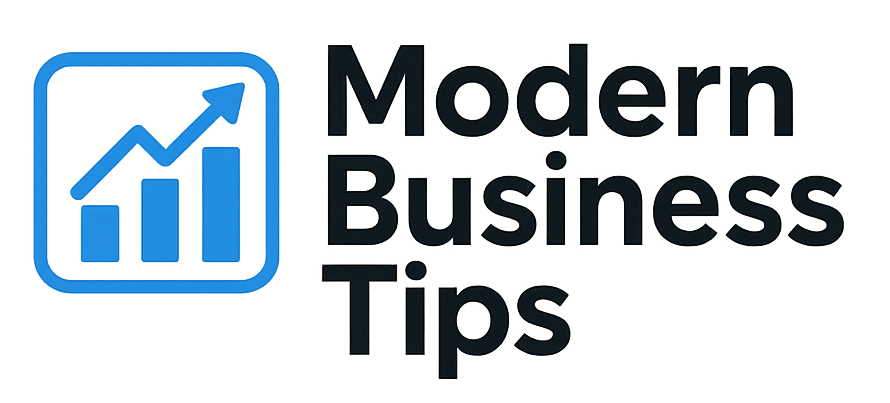Ecommerce, or electronic commerce, is about buying and selling online. It has changed how we deal with businesses and products. Now, we can shop from anywhere, anytime, thanks to the internet.
Online stores mean more than just shopping online. They include everything from clothes to digital files. In 2023, online sales jumped up by 22% for big names like Amazon.
This new way of shopping is not just convenient. It also lets businesses reach more customers and sell more products. Knowing about ecommerce can help anyone, whether you’re a shopper or a business owner.
Key Takeaways
- Ecommerce refers to buying and selling via the internet.
- Electronic commerce encompasses both physical and digital goods.
- In 2023, ecommerce sales experienced a notable increase.
- Understanding online store meaning is key for both consumers and businesses.
- Ecommerce opens up big opportunities for growing your market.
Understanding the Basics of Ecommerce
Ecommerce, or electronic commerce, has changed how we shop and do business. It’s interesting to see how it covers many business models. These models meet different customer needs.
Definition of Ecommerce
Ecommerce means buying and selling online. It lets people shop without going to a store. They can browse and buy from home.
Different Types of Ecommerce
There are many types of ecommerce:
- Business-to-Consumer (B2C): Businesses sell directly to consumers, like Amazon.
- Business-to-Business (B2B): Companies sell to other businesses, often for bigger deals.
- Consumer-to-Consumer (C2C): Online places where people sell to each other, like eBay.
- Consumer-to-Business (C2B): People sell products or services to businesses, seen in freelance sites.
Popular Ecommerce Platforms
These platforms are key for online sales. They include:
| Platform | Description | Ideal For |
|---|---|---|
| Amazon | Big online marketplace with lots of products. | All sellers wanting a wide audience. |
| eBay | A C2C site for auctions and direct sales. | Casual sellers and collectors. |
| Shopify | Easy ecommerce platform for creating stores. | Small to medium businesses. |
The History and Evolution of Ecommerce
Ecommerce’s journey shows how tech has changed shopping. The early days set the stage for big changes. Today, ecommerce is a fast-growing field with many important moments.
Early Beginnings of Online Shopping
The 1960s saw the start of ecommerce with Electronic Data Interchange (EDI). This tech helped businesses share documents digitally. The first online sale happened in 1994, when a CD was bought on NetMarket. This sale sparked interest in online shopping, even though many were skeptical at first.
Key Milestones in Ecommerce Development
Looking at ecommerce’s growth, some moments really stand out. The late 1990s brought big names like Amazon and eBay. These sites changed how we shop by giving us more choices and a sense of community.
The 2000s brought mobile shopping, a game-changer. Now, we can shop anytime, anywhere. Today, ecommerce keeps evolving with new trends like social commerce and personalized shopping.
| Year | Milestone | Impact |
|---|---|---|
| 1960s | Creation of EDI | Paved the way for digital business transactions |
| 1994 | First online transaction (NetMarket) | Kickstarted the ecommerce movement |
| 1995 | Launch of Amazon and eBay | Transformed shopping habits |
| 2000s | Rise of mobile commerce | Enabled shopping from anywhere |
How Ecommerce Works
Ecommerce involves several key parts, starting with the online shopping process. This includes browsing, selecting, and paying for items through secure payment gateways. Each part is important for a smooth experience for both shoppers and sellers.
The Online Shopping Process
The journey starts when a customer visits an ecommerce site. They look through different product categories. When they find something they like, they check out the details, reviews, and prices.
After deciding, they add items to their cart. Here, they can review what they’ve chosen.
Payment Gateways and Transactions
When customers pick their items, payment gateways handle the payment. These gateways keep credit card info safe and make payments easy. Services like PayPal and Stripe protect your data and make transactions smooth.
Logistics and Shipping in Ecommerce
Good ecommerce logistics are key to happy customers. After payment, the focus is on getting the order to you. Companies like Amazon lead in this area with services like Fulfillment by Amazon (FBA).
This ensures fast and reliable delivery. It shows how important strong logistics are in ecommerce today.
Benefits of Ecommerce for Businesses
Starting an ecommerce business comes with many benefits. It’s a great choice for entrepreneurs today. Online selling platforms help save money and grow your business. They also help you understand your customers better.
Lower Operating Costs
Ecommerce can save you money. You don’t need a physical store. This means no rent or utility bills. You can use this saved money for marketing and improving your products.
Access to a Global Market
Ecommerce lets you sell to people all over the world. It removes the limits of location. This can lead to more sales and help you stand out in your industry.
Enhanced Customer Data Insights
Ecommerce gives you important data about your customers. You can see what they like and how they shop. This helps you make your marketing better. It also makes your customers happier and more loyal.
| Benefit | Description | Impact |
|---|---|---|
| Lower Operating Costs | Reduced expenses from eliminating physical stores | Increased investment capabilities for growth |
| Global Market Access | Ability to sell products worldwide | Expanded customer base and revenue streams |
| Customer Data Insights | Analysis of consumer behaviors and preferences | Improved marketing strategies and customer loyalty |
Benefits of Ecommerce for Consumers
Ecommerce has changed how we shop, making it better and more fun. I can shop online anytime, from anywhere. This means I can find what I need easily, without being tied to store hours.
Convenience and Accessibility
Shopping online is super convenient. I can find lots of products from different stores without leaving my house. Whether it’s clothes, gadgets, or food, it’s all just a click away.
Comparison Shopping Made Easy
Shopping around is easy online. I can quickly compare prices and read reviews. This helps me find the best deals, making shopping online a great experience.
Personalized Shopping Experiences
Thanks to tech, online stores know what I like. They suggest products based on what I’ve bought before. This makes shopping online more enjoyable and helps me discover new things. For more on why ecommerce is great, check out this article.
Challenges Facing Ecommerce Businesses
Running an ecommerce business can be rewarding but comes with many challenges. As I navigate the digital world, I face hurdles that test my strategies and resilience. The digital competition is fierce, and security concerns are growing. Managing customer expectations adds to the complexity.
Competition in the Digital Space
The first challenge I face is the intense competition online. With easy entry, many businesses start online stores. It’s vital to stand out with unique products and marketing. Keeping up with market trends and competitors helps me stay ahead.
Security and Fraud Concerns
Security in ecommerce is a big deal. With more online transactions, data breaches and fraud risks grow. I focus on protecting customer data with strong security, like SSL certificates and secure payment options. This builds trust and encourages repeat business.
Managing Customer Expectations
Managing customer expectations is key for success. Issues like shipping, returns, and service quality can affect satisfaction. I aim to set clear expectations through open communication and reliable service. This makes customers feel valued and understood.
| Challenge | Description | Solution |
|---|---|---|
| Digital Competition | Numerous players in the online market create a crowded landscape. | Differentiation through unique products and targeted marketing. |
| Security in Ecommerce | Increased risk of data breaches affects consumer trust. | Implement robust security measures, like encryption and audits. |
| Managing Expectations | Customer dissatisfaction can arise from unmet service promises. | Establish clear communication regarding policies and timelines. |
The Role of Technology in Ecommerce
Technology has changed how we shop and businesses run. New solutions make things more efficient and satisfying for customers. Now, with mobile commerce, we can buy things anywhere, thanks to smartphones and tablets.
Mobile Commerce Trends
Mobile shopping is becoming more popular. Over half of online sales happen on mobile devices. Businesses that focus on mobile will attract more customers. Key trends include:
- In-app purchases that make buying easier
- Mobile wallets like Apple Pay and Google Pay for quicker payments
- Augmented reality (AR) apps that improve the shopping experience
Importance of User Experience (UX)
User experience is key in ecommerce. A smooth browsing experience leads to more sales. Customers like websites that are easy to use, fast, and informative. Personalized experiences make them happier and more loyal.
The Impact of Artificial Intelligence
Artificial intelligence is vital in ecommerce. AI helps businesses understand what customers want. This leads to better product suggestions, efficient stock management, and targeted ads. Using AI improves operations and the customer experience.
Future Trends in Ecommerce
The world of ecommerce is changing fast. New trends are emerging, like subscription services, social commerce, and a focus on being green and ethical. These changes are key to the future of online shopping.
Rise of Subscription Services
Subscription services are changing how we shop. People like getting products delivered regularly. This makes it easy for brands to get steady income.
Companies like Dollar Shave Club and Amazon Prime show how good subscription models can keep customers coming back. They make buying things simple and convenient.
Social Commerce Growth
Social commerce is making shopping easier by adding buy buttons to social media. Instagram and Facebook are leading the way. Now, you can buy things right from ads and posts.
As shopping and social media blend, businesses need to update their marketing. This way, they can make the most of this new trend.
Sustainability and Ethical Practices
Today, people care more about the brands they support. They want to know if a brand is green and ethical. This means businesses need to be open about their practices.
Brands like Patagonia and The Body Shop have shown that caring about the planet can win customers. It makes people loyal and boosts sales.
To stay ahead, businesses need to understand these trends. They must embrace subscription services, grow their social commerce, and focus on being green and ethical. These steps are vital for ecommerce to keep growing and changing.
Getting Started with Your Own Ecommerce Business
Starting an ecommerce business is both thrilling and tough. It needs careful planning, research, and action. Finding a specific market segment, or niche, is key. This helps you understand what your customers really want.
Identifying Your Niche
Identifying your niche means looking at market trends and what others are doing. It’s about finding a gap that interests you and meets consumer needs. Choosing the right niche is critical for your business’s success.
Setting Up an Online Store
Setting up your online store is the next step. You can pick from platforms like Shopify or WooCommerce, or create your own site. The goal is to make it easy for customers to navigate and find what they need.
Marketing Strategies for Ecommerce Success
After setting up your store, focus on marketing. Use social media, SEO, and email marketing to reach more people. Create engaging content and use data to improve your strategies. This approach is key to keeping your business growing.



